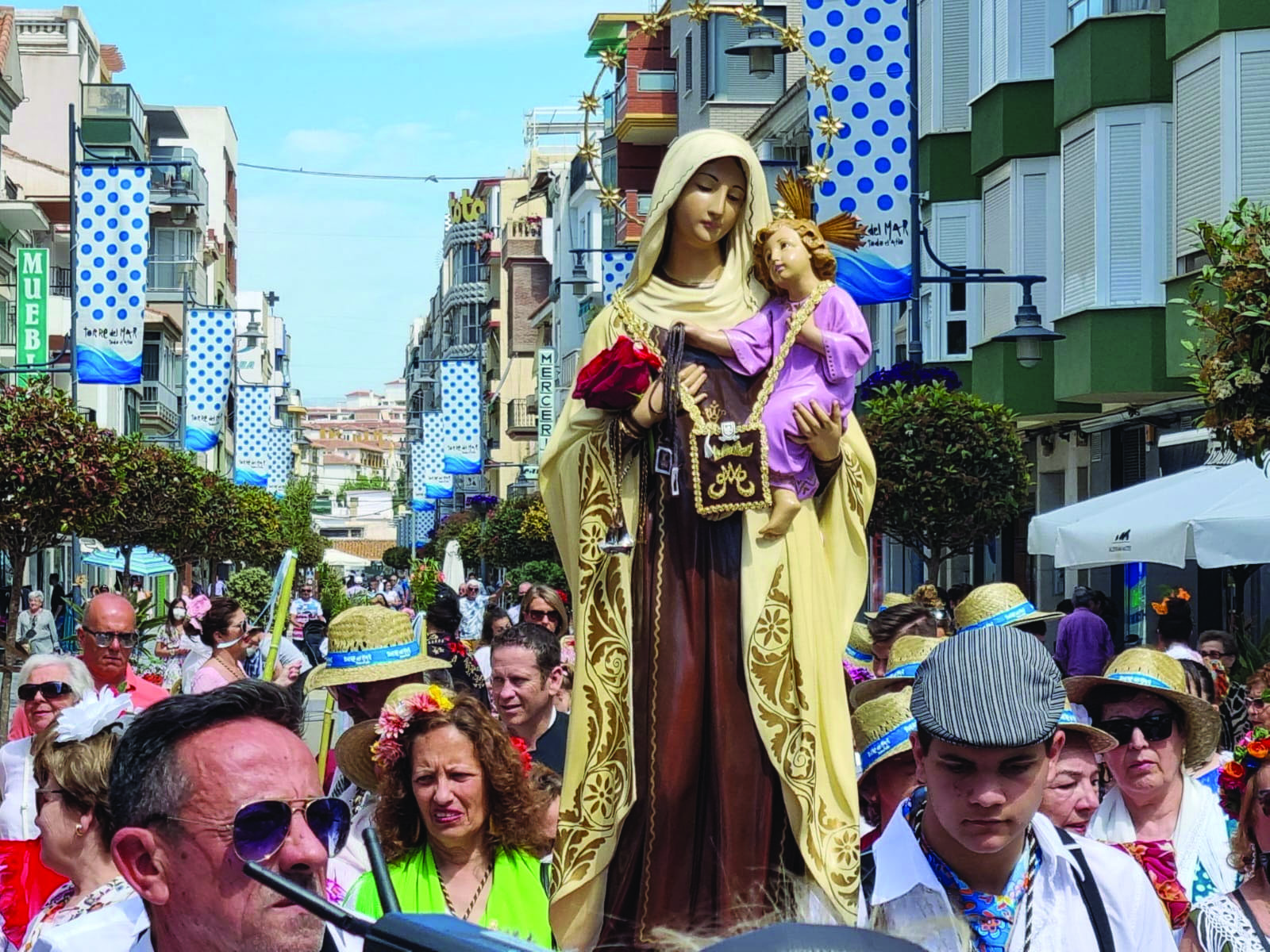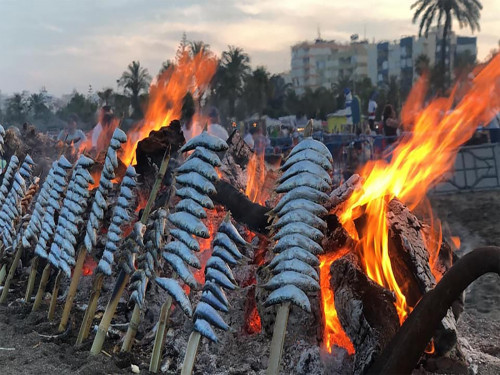La Virgen del Carmen
July 16th: Festival of La Virgen del Carmen
On the evening of the 16th July every year along the coasts of Spain, the sea is lit up by boats festooned with twinkling lights and flowers, the horns of fishing boats sound out across the water and people pay homage to the Patron Saint of the Sea, La Virgen del Carmen. As the sky begins to darken, the lights reflect on the surface of the sea and makes an amazing sight.
This is the Festival of La Virgen del Carmen, patron saint of many coastal towns but above all, she is the patron saint of the sea and she offers protection to those who sail and work on the water, from the armed forces to the humble fisherman.
The significance of this figure to the coastal towns in Málaga and the Axarquía cannot be underestimated. Many towns have small sanctuaries containing effigies of the Virgin, which devotees regularly decorate with flowers.
Although the Virgin inspires year round devotion, the 16th July is the day upon which her protection is celebrated.
The history of this event goes back centuries; the Virgen del Carmen was venerated by the pope in 1587. The story is that on 16th July in 1251, the Virgin Mary appeared as a vision to a religious order of monks known as the Carmelites, who had named themselves after Mount Carmel in Israel.
The Virgin made a promise of her protection to all who wore her scapular - a type of ribbon worn by religious orders.
As the patron saint of the sea and seafarers, she is said to protect all those who sail, including seamen and fishermen who rely on her protection from the dangers at sea.
In days gone by, it is said that some people were so convinced of the Virgin’s ability to clean the sea each July on her Saint’s day, that they would not bathe in it until after the 16th. A lingering belief is that the celebrations cleanse the sea to allow the stock of fish to thrive and increase, to the benefit of fishermen and all those who buy and eat what they catch.
The Celebrations
In Málaga, many coastal towns celebrate the festival by placing an effigy of the Virgin onto a dais, which is carried around the town before being set onto a small boat and taken out to sea and up and down the coast. These boats are beautifully decorated with white flowers and illuminations.
The boat floats along the shore to bless the waters of the Mediterranean. In some towns the effigy is taken from the boat and held in the water by the sailors until it is fully submerged, and then brought back up again, streaming with seawater. The attendants dress for the occasion in traditional white shirts, black trousers and a red “fajín”, which is like a sash worn around the waist.
Fishermen in decorated boats also take to the sea to make a kind of flotilla, blasting their horns as the boat carrying the Virgin sails along the coast of the town. In some places people throw white flowers into the sea, and call out “guapa” (pretty) from the shore as the boat passes by.
In Málaga city there is an iron effigy of the Virgin which remains under water all year and is only brought to the surface on this date by divers. As the celebrations end the effigy is once again taken underwater to be left there in what is considered to be her natural place, until the following year.
The celebrations can include firework displays, fairs such as that held in Torremolinos, and even live concerts. In Estepona, the Virgin is revered as the Patroness of the town, and after sailing along the coastal area, she is taken through the streets for a further procession.
Of course there is plenty of drinking, dancing and revelry, but above all this is also a deeply religious occasion in a country with a long and deep tradition of Catholicism. The festivities normally begin just after evening mass.
For some, this event has even greater significance because they share their name and this special date with the Virgen del Carmen. As we all know, every Spaniard has a special day each year, known as their Santo or Saint’s day, which they share with the Saint whose name they have or perhaps have a derivation of. This is a day on which - the children at least - receive a gift and it can be as important as their birthday. For any Carmens or Carmelas, and even the occasional Carmelo (not a very common boy’s name), the 16th of July is also their special saint’s day. So for many people this day has a dual significance.
In parallel with the very religious meaning of this festival, many traditions also know Stella Maris (Star of the Sea), as the North or Pole Star (Polaris). This is the only star that stays in the same position and was of course the only navigational guide for fishermen and sailors before compasses were invented. Even boy scouts and hikers (before mobile phones arrived!) were advised to follow the North Star if they became lost without a compass. So again, the connection between the sea, guidance and protection is there, and there is some significance for all of us who travel, especially by sea.
Even for a casual non religious onlooker, you cannot fail to be touched and inspired by the devotion to the Virgen del Carmen, and the beauty of this special event on a warm balmy night every July.


 Danish
Danish Dutch
Dutch French
French German
German Spanish
Spanish


